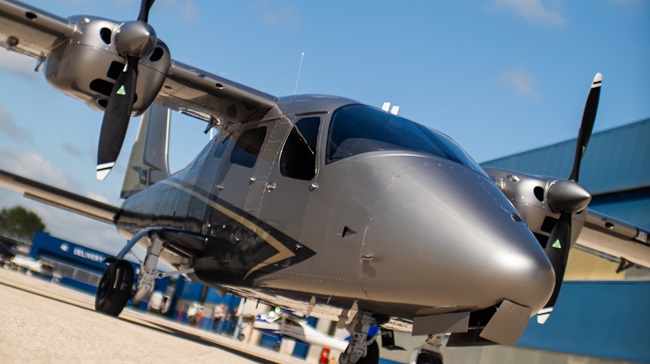This 400-foot “runway” has a swamp at one end and a two-story brick building at the other. It’s a steep hill with a 20-degree slope. Tall trees on either side create swirling winds. Landing short, or long, or a botched go-around, could bring disastrous consequences.
“Our airplanes are made to fly from pastures, clearings, and driveways, so this runway—any runway—is more than adequate.” —Troy Woodland
Yet this is the place Just Aircraft owners Gary Schmitt and Troy Woodland choose to test, validate, and commute to and from in the SuperSTOL—a no-compromises backcountry aircraft that brings monster truck qualities to the E-LSA market. The SuperSTOL is meant to give pilots the option of making all their takeoffs and landings away from traditional airports.
“Our airplanes are made to fly from pastures, clearings, and driveways, so this runway—or any runway—is more than adequate,” Woodland says. “In fact, 400 feet is about twice as long as it really needs to be. The SuperSTOL makes this a very safe place to operate.”
I’m in the left seat of a SuperSTOL with Woodland as we approach the company’s facility at Walhalla, South Carolina, in the Appalachian foothills on a cool, dry, evening with an eight-knot crosswind. Turning left base at 55 miles per hour, the mechanical slat on the leading edge of the left wing deploys automatically with a clunk, followed a few seconds later by the slat on the right wing.
We drop full flaps and slow to 50 mph. “We could slow it down a lot more,” Woodland says, “but let’s keep the speed up to deal with any sink from wind spilling over those trees.”
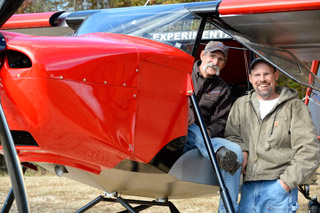
Crossing the runway threshold about 20 feet agl, Woodland counsels the unthinkable: full aft stick and idle power. This potentially calamitous combination would invite a stall and loss of control in any other aircraft. But the SuperSTOL flies on with a 15-degree nose-up pitch attitude and a 1,000-fpm descent rate until impact.
Such an impact with the ground in other general aviation airplanes would result in bent metal, an awkward phone call to an insurance agent, and an FAA-mandated 709 ride. But the SuperSTOL’s A-frame landing gear, oversized shock absorbers, and 29-inch tundra tires soften the crush, and the airplane rolls to a stop in about 50 feet with moderate braking. We come to a halt short of midfield and must add power to taxi up the hill to Just Aircraft’s 32,000-square-foot manufacturing center.
When we get there, Woodland spins the airplane 180 degrees in the gravel parking lot and launches down the hill like a ski jumper. We’re airborne in less than 100 feet.
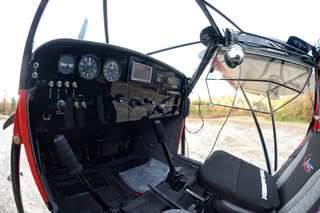
“Now, let me show you a short-field landing,” he says.
Demand accelerating
Just Aircraft hasn’t participated in the current aircraft-manufacturing depression. While other firms have been forced to radically reduce output and slash employment, Just Aircraft is doing the opposite. The company, founded in 2002, also manufactures Highlander and Escapade kit aircraft, and the SuperSTOL has driven its growth to 25 employees from 10 a year ago. Kit production has jumped to nearly a dozen airplanes a month from seven a month last year—and the company has a six-month backlog, even if it meets its ramped-up delivery timetables.
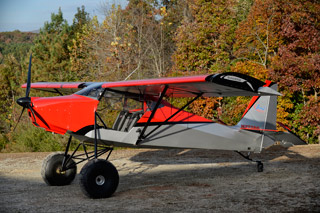
Few are as surprised by this as owners Schmitt and Woodland. “When we made the prototype, we realized that the new wing and landing gear and other changes had doubled our production costs,” Woodlawn said. “I knew that I wanted one, and Gary wanted one, but I figured we might be the only two.”
The prototype was a Highlander airframe with a turbocharged Rotax 914 engine. They added the slatted wing and A-frame landing gear a few days before EAA AirVenture in 2012 and then took it to the big show. There, flying at the ultralight area, the SuperSTOL became a sensation. Now, the extreme design accounts for about 80 percent of Just Aircraft’s kit orders, and the company has begun retrofitting Highlanders with SuperSTOL wings and landing gear.
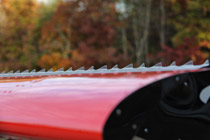
“We really don’t know the size of the market,” Schmitt said. “We thought it would taper off by now. But it’s not. Demand is accelerating, even in a down economy.”
Schmitt and Woodland don’t fit the corporate mold of traditional aircraft executives. Schmitt’s background is in the lumber and construction businesses, and Woodland is a largely self-taught aircraft designer obsessed with making aircraft that can fly slower, not faster. They wear jeans, boots, and flannel shirts to work, and both are more comfortable on the factory floor than in an office.
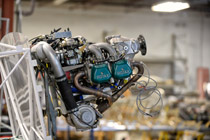
The aspect of the SuperSTOL that captures people’s imagination is the ability to fly to and from places that don’t have runways at all. Rotax engines are designed to use auto fuel—not avgas—so airport stops are purely optional.
“If people are interested in flying from one airport to another, the SuperSTOL probably isn’t the best airplane for them,” Woodland said. “It’s meant to operate from places that don’t even resemble runways.”
Several kits were recently sent to New Zealand, and Just Aircraft has airplanes flying from Alaska to Florida. Perhaps the company’s most visible presence is on YouTube, where Highlander pilot Steve Henry’s “dead stick takeoff” video has been viewed more than a half-million times, and a sequel—“dead stick takeoff and landing”—is gaining similar curiosity.

“I don’t pretend to know a lot about YouTube,” Woodland says. “But every time a new video goes up, our phone starts ringing.”
Body slam
The SuperSTOL borrows heavily from two of the most well-known STOL aircraft in aviation history. The A-frame landing gear is based on the Pilatus Porter, and the mechanical leading-edge slats are reminiscent of the Helio Courier—as are the 40-degree Fowler flaps. The locking tailwheel is beefed up for extreme rough-field operations with its own pneumatic shock absorber.
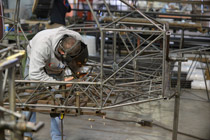
Cabin entry is a simple matter of climbing the landing gear and swinging into the left seat. A top-hinged Plexiglas door is latched at the bottom. “There’s nothing inside that’s breakable, so get in however you want,” Woodland says.
The control stick and hydraulic toe brakes are conventional. A mechanical flap handle is mounted between the two seats, and the flaps are deployed by pulling up on the handle. (There are two flap detents, at 20 degrees and 40 degrees.)
Starting is normal for the 100-horsepower, dual-carbureted Rotax 912ULS. The airplane’s high deck angle puts the occupants in a semi-reclined position on the ground. Visibility is very good out the Plexiglas sides and somewhat limited over the nose.
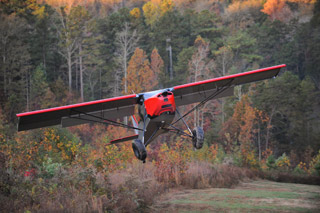
Taxi steering on grass or pavement is positive, mostly because of the oversized rudder and significant amount of weight on the tailwheel. The SuperSTOL’s main landing gear are well forward of the center of gravity to decrease the odds of nosing over from heavy braking. This also puts more weight than usual on the tailwheel.
The SuperSTOL can take off at any flap setting—or with no flaps at all. Woodland typically uses one notch, or lift flaps, for takeoff. Acceleration is brisk and short.
On a flat grass surface at an elevation of 900 feet with calm surface winds and standard air temperature, forward stick brings the tail up in about two seconds, and brisk aft stick horses the airplane off the ground in 150 feet. With two adults, 25 pounds of baggage, and half fuel, the airplane climbs at an estimated 40-degree angle at 50 mph.
Level at 1,000 feet agl, I raise the flaps and accelerate, and air pressure pushes the slats in against the leading edges of the wings when we reach 75 mph. The three-blade composite propeller is optimized for climb, and that reduces cruise performance. With the power set at 5,400 engine rpm, the SuperSTOL cruises at 90 mph.
Control forces are moderate and the rudder is slightly heavier than the ailerons and elevator. Steep turns are conventional, and the overhead skylight provides excellent visibility in turns. The ailerons are activated by pulleys and are quite crisp and effective, with a maximum roll rate of about 70 degrees per second.
But the SuperSTOL is all about slow flight, and it is here that the airplane comes into its own.
The slats deploy in level flight at about 55 mph, and the SuperSTOL’s personality changes to something quite unique. There’s no such thing as a power-off stall, for example. Chop the power and pull the stick all the way aft, and the SuperSTOL wing never reaches its critical angle of attack. Instead, the airplane floats down like a parachute (with a forward speed of about 42 mph and a descent rate of about 1,000 fpm). Ailerons remain effective, and so does the rudder. Landing in this configuration feels like a body slam, but the airplane seems not to mind.
The mechanical flaps have about as much area as a Cessna 180’s, and it’s best to slow down and let the slats deploy first. Otherwise, pulling the flap handle requires a mighty tug.
I made a couple takeoffs and landings at Clemson/Oconee County Airport flying a typical three-degree VASI glideslope at 60 mph with the slats pressed back against the leading edges, and the airplane felt conventional in every way. Then, with Woodland’s encouragement, I tried a few much steeper approaches at slower airspeeds with the slats deployed, and that was a mind-bender.
With full flaps, idle power, full aft stick, and slats out, the SuperSTOL drops like an anvil. Increase engine power and the rate of descent moderates while pitch attitude increases.
For extreme short-field landings, Woodland touches down on the tailwheel in a 30-degree nose-up attitude and lets the main wheels bang to the ground. The shock absorbers compress, and that lowers the airplane’s center of gravity and allows aggressive braking without any hint of nosing over. Using this technique consistently reduces touchdown speeds in calm winds to 25 miles an hour, and the ground roll is a scant 40 feet.
Woodland has flown the SuperSTOL about 1,000 hours and provides countless demonstrations for fellow pilots and prospective buyers. But he said he is still developing new techniques to take full advantage of the airplane’s unique capabilities.
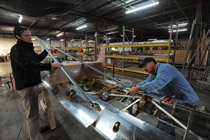
“When you fly a SuperSTOL like a normal airplane, it responds like a normal airplane,” he said. “It took me hours of flying at high angles of attack with the slats extended before I started to start to appreciate some the things this airplane can do—and I’m still learning.”
Our hour-long demo flight provided a glimpse of the kinds of places that become accessible in a rugged, light airplane that can fly with perfect control at seemingly impossibly high angles of attack. Any open space becomes a potential landing area, and runways are irrelevant.
Getting the most out of a SuperSTOL will require veteran pilots to “unlearn” some basic habits of self-preservation. But the reward for doing so is access to places that would be totally out of reach in virtually other fixed-wing aircraft.
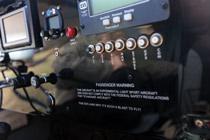
“I bring the SuperSTOL in and out of places that I wouldn’t even consider in anything else,” Woodland said. “That’s what this airplane is all about.”
Photography by David Tulis
Email [email protected]
Spec Sheet
Just Aircraft SuperStol
Price $36,650 kit price (excluding engine,prop, instruments, covering)
Empty weight | 779 lb
Max gross weight | 1,320 lb (if registered as LSA) 1,500 lb (Experimental)
Fuel capacity | 30 gallons (27 gallons in wings)
Cabin width | 44 in
Wings | Folding wings













